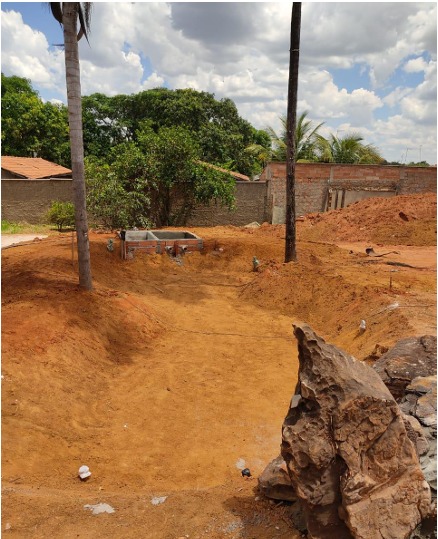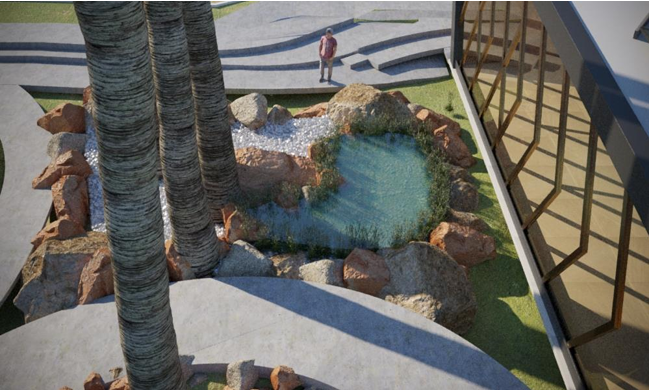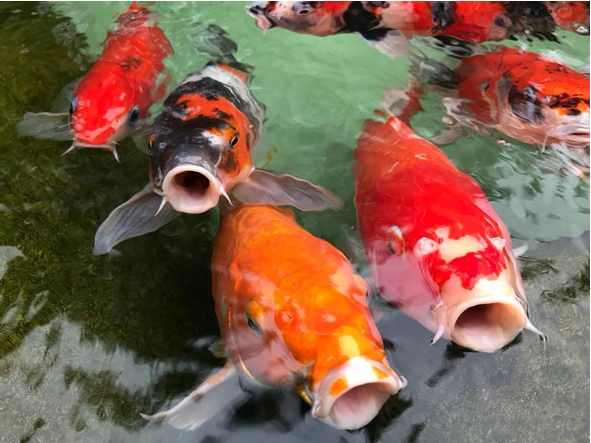Transforming your garden with an ornamental pond can be one of the most charming and peaceful additions to your environment. However, to turn it into a true work of natural art, it’s essential to follow a few fundamental steps. From planning to the installation of water and lighting systems, every detail must be carefully considered. In this guide, we will walk you through the step-by-step process to successfully create your own ornamental pond.

1. Marking and Excavation of the Land: The Beginning of It All
Before starting the excavation, it’s important to properly mark the area where your pond will be built. Use white powder or another visible material to outline the edges, following the dimensions of your design.
- Excavation: The excavation should have a 45° angle on the edges, ensuring that the soil around the pond doesn’t slide. The recommended maximum depth is 0.60 meters, providing stability to the land.
- Level Checking: After excavation, check the depth levels to ensure that all parts of the pond are uniformly leveled, avoiding uneven areas.
Before filling the pond with water, the hydraulic tubing must be installed to ensure proper circulation. Connect the pond’s supply tubing to the potable water network of the area, ensuring a consistent water supply.

2. Installation of Hydraulic Tubing: Ensuring Water Circulation
- Sealing: Make sure that all tubing connections are sealed properly to avoid leaks and failures in the drainage system.
3. Water Maintenance with Ozone: Clean and Clear Water
To maintain the pond water clean and healthy, using ozone is an excellent option. Ozone purifies the water and keeps its vibrant color, preventing algae growth.
- Ozone Generator Installation: Install the ozone generator with a venturi to inject the gas directly into the water, ensuring a healthy environment for both fish and plants.
- Maintaining Quality: A good biological filtration system and constant water circulation are essential to ensure ozone effectiveness.

4. Water Circulation: High-Performance Pumps
Water circulation is crucial to ensure that the filtration system works correctly and that the water remains clean.
- Submersible or External Pumps: Use high-capacity pumps, such as the Cubos Orca line, which ensures up to 25,000 liters per hour flow. These pumps are designed for continuous operation, without interruptions, guaranteeing system efficiency.
5. UV Filters: Water Sterilization
Installing UV filters is essential to sterilize the pond water and keep it free from microorganisms that could harm the fish or the pond’s aesthetic.
- UV-C Radiation: The UV filter uses UV-C radiation to eliminate algae and harmful microorganisms, ensuring that the water remains clear and odor-free. The Cubos UV filter, for example, is highly efficient and comes with a 10-year warranty, providing long-term peace of mind.
6. Electrical Installation: Safety First
As the pond includes electrical systems for the pumps and lighting, it’s crucial that the installation is carried out safely and professionally.
- Professional Installation: Hire a qualified electrician to ensure that the installation complies with safety standards (NR10) and that all electrical points are tested for proper functionality.

7. Masonry Box for Equipment: Organization and Protection
Building a masonry box to house the pond equipment is an important part of the process. It ensures that the pumps, filters, and other devices are well protected and organized.
- Materials and Finishing: The box should be constructed with high-quality ceramic bricks and have a top made of Ipê wood, ensuring both an elegant appearance and durability.
8. Waterproofing: Geotextile Membrane for Protection
To ensure that the water stays within the pond and prevent infiltration, waterproofing is essential.
- Geotextile Membrane: Use EPDM or PVC geomembranes for waterproofing. Additionally, apply a layer of geotextile beneath and above the membrane to protect it from damage.
Building an ornamental pond requires attention to detail and the use of the right materials. From excavation to the installation of ozone systems, pumps, and UV filters, each step is crucial to ensure that the pond is not only functional but also aesthetically pleasing. With proper planning, you will create a beautiful and tranquil environment in your garden, transforming it into a true oasis.